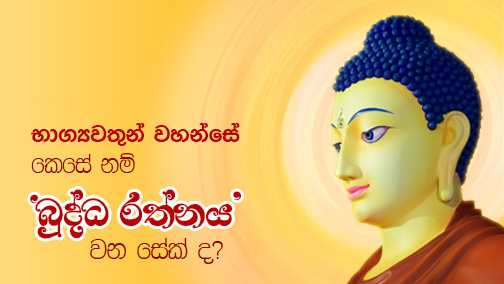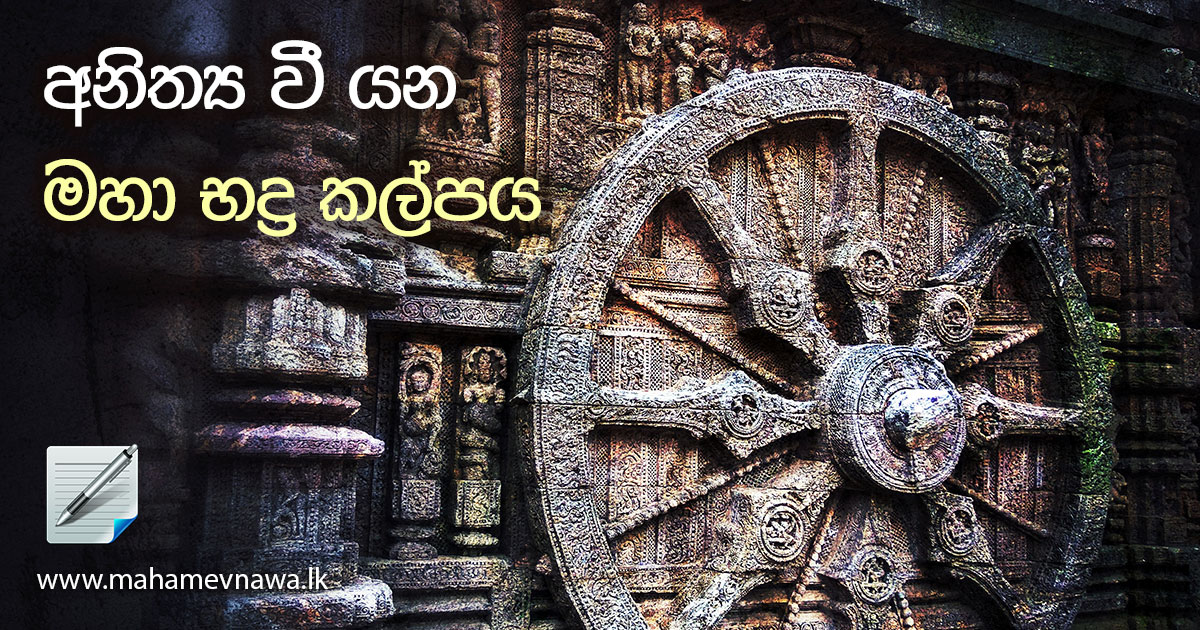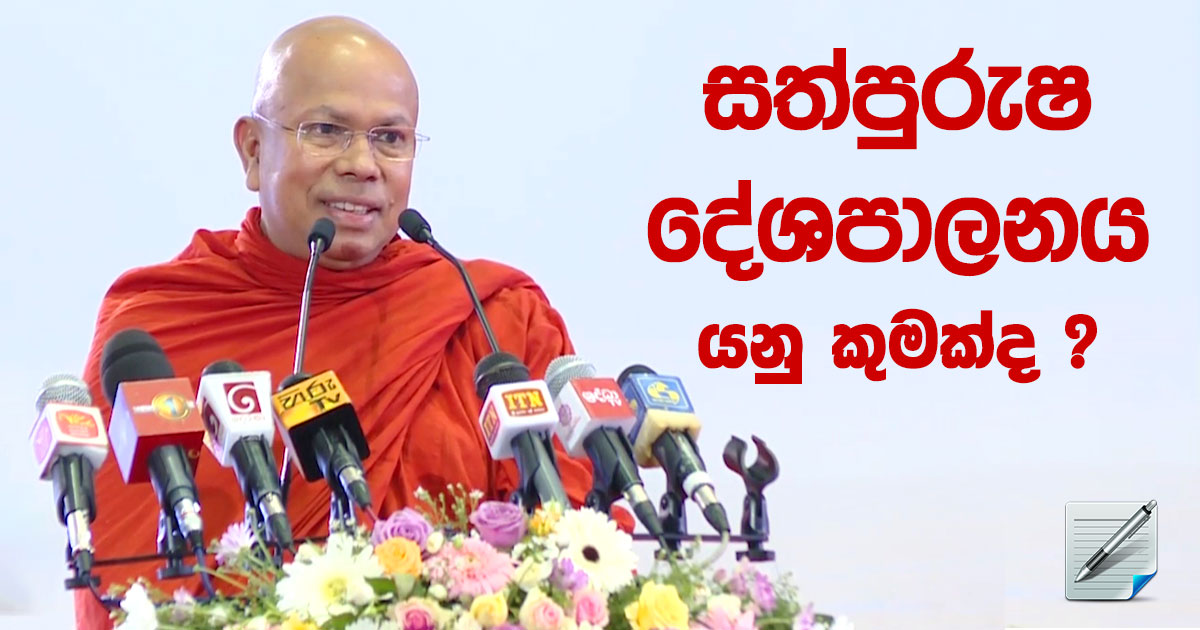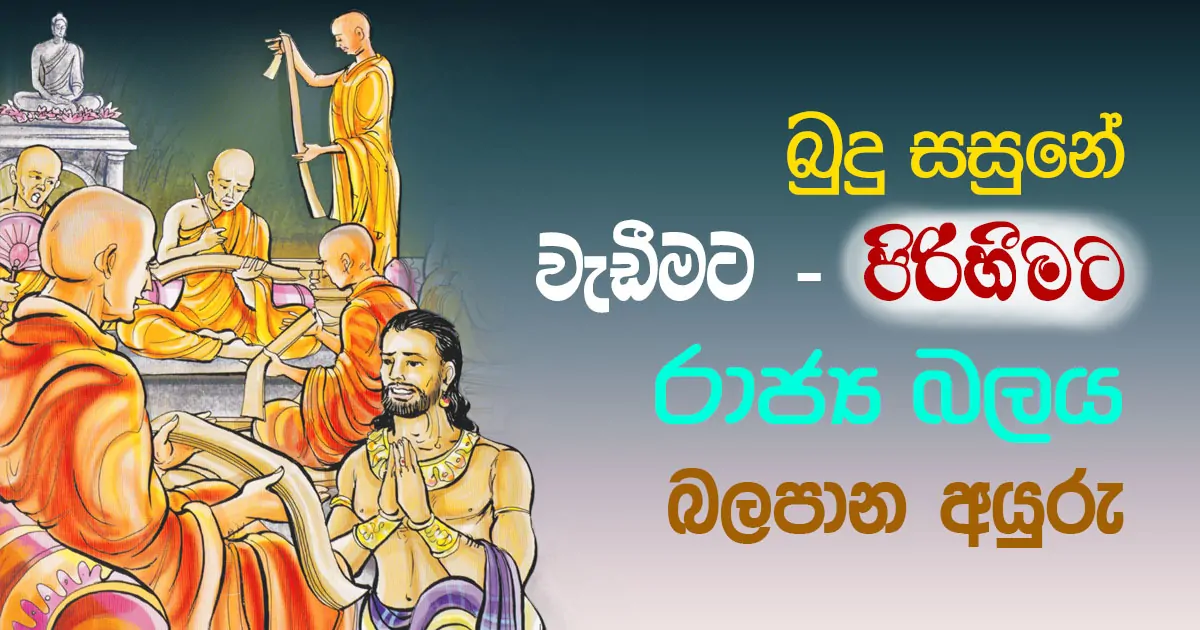On the other hand, the human world is completely different. Humans belong to the type known as ‘Nānātta Kāyā Nānātta Sagnyā’, which means different bodies and minds. In human world, we have to face feelings mixed with suffering and happiness. This difference leads them to divide into different groups even due to a small incident and fight with each other.
One becomes violent when his believes or opinions are suspected and criticized by others. Thus, they start harming each other. Their minds become a house for enmity. This results in bad habits like pointing fingers and maliciously defaming others’ good names. When none of these accusations demote one’s wealth or good name, they do not mind even killing or dangerously harming others by performing vicious rituals to fulfill their evil intention. These are the foundations that help building an enmity which can last for a long time within one’s life.
As an example, let us consider a story from one of our Buddha’s past lives in which he was developing his skills as a “Bōdhisatta”. The life story, which is known as “Sērivānija Jātaka”, shows us how two friends became eternal enemies. One of them had a mind full of righteous thoughts. The other one was evil with his undesirable desires. They went their own ways to sell their goods because of these differences in their life styles. The evil friend’s trade was unrighteous. He once met a family of an old grandmother and a granddaughter while he was traveling to sale his goods. This family had a gold plate that had been used by their ancestors. The child wanted some bracelets, and her grandmother offered their gold plate a source of money. The evil seller identified the high value of that gold plate and thought to cheat that innocent family. He promised only one bracelet to that plate.
After pretending that gold plate to be of no value, he went away saying to come back for it later. The other righteous seller came to that house without knowing what happened earlier. When that old grandmother showed him the gold plate, he mentioned its value honestly. The grandmother was thrilled and asked him some of his ornaments for that plate. He gave all what he had with him to that family and took the gold plate with him.
The evil friend came back thinking to cheat that family and get the gold plate, but it was gone by then. He ran towards the other seller with a great hatred aroused from the desire to have that gold plate. However, he was too late. His friend was crossing the bank of the river. Seeing that gold plate slipping away from his finger tips, he could not bear the thought of desire for it. He fell down on his keens on the ground and took some sand to his hands. He promised himself to follow every life of that righteous seller (the Bōdhisatta) and take his revenge for taking the gold plate from him. Thus, he implanted a seed (a “Sanskāra”) of enmity inside his consciousness at that point.
He did not aware of the initiation of a new enmity which leads him to a dangerous journey of “Samsāra” (birth, age, sickness, and death). He died on that day seeing the disappearing shadow of the Bōdhisatta (the righteous seller). He murmured to himself with hatred and enmity “OK! You may go… But, I will get my revenge for taking my gold plate from me. I will follow you in many life times like these stone pebbles in the sand of my hand.” In fact, it was not a lie. His wish came true in a countless number of lives of our Bōdhisatta. When the Bōdhisatta was born as a music master called “Guttila”, that evil friend was born as a student called “Mūsila” to learn from the master. He gave the master a great deal of trouble not because of any faults of the Bōdhisatta, but because the evil student was born with the developed enmity towards him. Bōdhisatta endured everything with a great patience. His endurance was limitless, but the Mūsila could not see it.
He and his enmity lasted for a long time, and even followed the Bōdhisatta in the life he attained the Buddha-hood. He was born as the “Dēvadatta” in that last life of Buddha and destroyed his life and as well as many others’ to a great extent. He made many people to lose their chance to follow the path to Nibbanha by demolishing their faith towards Buddha. Dēvadatta did this to take his revenge from Buddha. However, it ended accumulating the great demerit known as “Ānantareeya” a number of times to his consciousness. These demerits lead him to a definite rebirth in the great hell for a countless period of time.
When someone cultivates merits to become the greatest person of the world, another one follows him from life to life accumulating demerits by bothering and harassing him. Is not the seed of enmity formed within himself the misfortune and the sole reason for such danger? It is possible for anyone to have enemies. Even Buddha had to face the consequences of another person’s enmity. It is in fact the nature of this dangerous “Samsāra”. However, a person will become tremendously joyful if he is capable of saving himself from being victimized by the enmity. The advices given by the Buddha will definitely help us to develop our minds with patience and free ourselves from hatred or enmity without letting it exhaust us. Reading discourses like “Kakachūpama Sutta” is very important in this regard.
In fact, an unusual type of Buddhism called “Mahāyana” was created because of some people’s attempt to feed enmity within them. The second great convocation was performed by a group of great Arahants (disciples of Buddha who attained the Nibbanha) to support the prevalence of the Dhamma and discipline in their pure forms. The reason for this convocation to take place was a group of monks at that time. They made and agreed on ten items disregarding the discipline part in Buddhism and by downgrading its true value. However, these monks who could not take the discipline seriously determined to revenge the great Arahants who performed the second convocation. Then, they tried defaming the state of realization of the Arahants. They made questions that could provoke one’s suspicion about Dhamma. Also, they used these questions to propagate a view which said that the path-fruition is being downgraded.
Their only intention was to make a strong hold against the pure form of Sangha (the great disciples of Buddha) but not to salute the untainted ways of Buddhism. The wrong views of these groups of monks became vigorous by the time of the third great convocation. One could clearly see how bad these erroneous views had been propagated by that time when we read the “Kathāvatthupakarana”.
However, the third great convocation also purified the Order of Gautama Buddha by clarifying how wrong those views were. When their views were falsified, they created the “Mahayana” with the concept of “becoming or perfecting Bōdhisatta”. In this new form, they rejected practicing the Noble Eight-fold Path in the Order of the Gautama Buddha. They refused the truth of deities taught by Buddha and created the concept of Bōdhisatta. As a result of this creation, many people lost the Order of the Gautama Buddha. In fact, this was also a bad effect of enmity cultivated in these monks’ minds.
Try to understand what Dhamma really means. Dhamma is the endurance. It is the compassion. Being abstained from enmity is Dhamma. Abstaining from hate is Dhamma. It is also being abstained from avenge. Dhamma is being abstained from retaliation. The dissemination of loving-kindness is Dhamma. When these virtuous elements, which hold the true meaning of Dhamma, are absent in a Dhamma sermon, there is only a set of useless words in that sermon, even if it is being performed throughout the day.
If one can forget the sign that causes the enmity and free the mind from it, then it will be a great benefit. The happiness generates within a heart (or mind) when it is full of loving-kindness and not when it is full of hatred and enmity. Therefore, one who remembers Dhamma lets go of the ego within him for the victory or defeat and spreads loving-kindness to the entire world. Free of enmity is a pleasure!
~ Venerable Kiribathgoda Gnanananda Thero ~
Note by Nayana Nilmini









